
All about frozen food manufacturing
Description: The frozen food manufacturing industry is under a constant wave of evolution, shaped by emerging trends, consumer behaviors, technological advancements, and pressing challenges. As society moves towards embracing environmental responsibility, sustainability-focused measures such as green packaging are becoming progressively significant in this industry. Likewise, as health consciousness among consumers rises, the shift towards organic, nutritious frozen food options has noticeably amplified. Alongside, rapid technological breakthroughs are bringing about a revolution, enabling manufacturers to increase productivity, efficiency, and meet evolving consumer demands. Nevertheless, this industry is not devoid of challenges, the most prominent ones encompass meeting strict regulations, ensuring long shelf-life, managing cold-chain logistics, and maintaining nutritional integrity of the products. The frozen food manufacturing industry is a dynamic sector that is constantly evolving due to myriad factors influencing its trajectory. Consumer demands, advancements in technology, and shifting international markets all coalesce to form an ever-shifting landscape. This blog seeks to elucidate some of the prevailing trends that are shaping, and are likely to further alter, the frozen food manufacturing industry. When we talk about trends, the concept of consumer demands and preferences takes precedence. A clear trend that is quite visible in the frozen food circles is the emphasis on health and wellness. Today’s consumers are not only looking for convenience; they are coupling it with a keen focus on nutritional value. Foods marketed as natural, organic, gluten-free, or containing superfoods are leading the way. There's a rising demand for frozen meals that deliver on the promise of being high in protein, rich in fiber, low in sodium or sugar, and free from artificial ingredients. Another trend that is forging ahead is the expansion of global tastes. Consumers are becoming more adventurous, seeking out multicultural flavors. This trend extends to the frozen food aisle, where international meals are making a mark. Frozen food manufacturers launching ethnic cuisines that capture authentic flavors have a promising market to tap into. At the technology front, advancements in freezing techniques are contributing greatly to the frozen food manufacturing industry. Rapid Freeze Technology, for example, freezes the food quickly, preserving its nutritional value and taste, thereby enhancing its overall quality. Similarly, use of AI and IoT in tracking and managing inventory ensures efficient supply chain operations. Furthermore, sustainable packaging is on everyone's radar. Environmental impact has never been more scrutinized as it is today. Biodegradable, compostable, and recyclable packaging are more than just buzzwords; they are shaping the expectations of shoppers, and by extension, the strategies of frozen food manufacturers. It's worth noting the considerable effect of e-commerce revolution on frozen foods. The rise in online grocery shopping can potentially disrupt traditional channels. This is something frozen food manufacturers need to adapt to and strategize for. Lastly, as the pandemic continues to reshape societal norms, one can't overlook the rise in home cooking. More people are turning towards cooking at home and frozen ingredients serve as a convenient, cost-effective, and less perishable option. This will open new avenues for manufacturers to cater for DIY meals and recipe-ready ingredients. Understanding these trends is imperative for any business wishing to remain competitive in the frozen food manufacturing industry. As we move forward, the businesses that are agile and innovative enough to embrace these trends will likely be the ones to flourish. But remember, the only constant in business is change. Therefore, keep ears close to the ground, maintain an open mind for new ideas, and keep networking to stay attuned to the latest industry happenings. And most importantly, innovate constantly to meet those changing needs and ride the wave of success. The frozen food manufacturing industry is an intricate landscape that is undergoing constant evolution, driven by technological advancements, shifting consumer preferences, and rising ethical considerations. Among these complexities, two key challenges continue to stand out – the competition for consumer attention, and the continuing struggle for supply chain optimization. The battle for consumers’ attention is fierce. They do not navigate store aisles aimlessly; they seek the best, the most convenient, and often, the most innovative products. This consumer demand for heightened quality and innovation is intensifying the competition in the frozen food space dramatically. Companies are no longer competing simply on taste and convenience; they are competing on differentiation. What is your unique selling point? What makes your brand more appealing than the rest? These are questions every frozen food manufacturer must respond to. Strategies aimed at securing unwavering consumer attention must prioritize customization. The family of four looking for a hearty dinner option. The busy professional in need of a quick, yet satisfying lunch. The health-conscious individual striving for a balanced diet. The range of customer personas is broad, and the ability to cater to each without compromise on quality will define market winners. To tackle this challenge, manufacturers must leverage the power of advanced customer analytics. This broad data spectrum can offer insights into purchasing behaviors, consumer preferences, and emerging trends, enabling companies to tailor their offerings strategically. The second key challenge is the effective optimization of the supply chain. The COVID-19 pandemic has further revealed the frailties in global supply mechanisms, emphasizing the need for robust, flexible, and resilient supply chains. This is particularly critical in the frozen food industry, where timely delivery and maintaining stringent temperature controls are paramount to maintaining product quality and safety. To address this, forward-thinking companies are investing in intelligent supply chain solutions. By incorporating technologies like AI and machine learning, companies can enhance their prediction and management of demand and supply dynamics. Moreover, blockchain technology can bolster traceability, ensuring integrity and transparency in the supply chain, key components consumers increasingly value. Furthermore, there's the adoption of sustainable practices in supply chain management, a smart strategic move as well as an ethical one. Green supply chain management, which entails incorporating environmentally friendly practices, such as reducing energy consumption and minimizing waste, is rapidly becoming a norm as companies strive to meet customer expectations and reduced environmental impact. As these two key challenges continue to unfold, the ability to anticipate, innovate and adapt will be the cornerstone of success for frozen food manufacturers. Both challenges necessitate a careful balance of keeping customers' desires and technological advancement at the forefront, with the ultimate aim of achieving enhanced business growth and longevity in an ever-evolving industry landscape. Artificial intelligence (AI) and machine learning (ML) are changing the face of nearly every industry, and frozen food manufacturing is no exception. These technologies are enabling the development of intelligent supply chain solutions, revolutionizing the entire production process. They can predict supply volume, automate factory operations, and optimize inventory management. This not only improves efficiency but also reduces waste, contributing considerably to more sustainable practices. In the competitive race for consumer attention, being distinct makes a significant difference. Understanding unique selling points and how to capitalize on them is crucial. Each product has its unique story, whether it's the locally sourced ingredients or a grandma's secret recipe. Telling this story effectively can give a competitive edge. Customization is quickly becoming a game-changer in this market. Businesses are now creating tailor-made product categories to cater to different customer personas' needs and expectations. No more one-size-fits-all; it is time for greater variety and specific offerings. The strategic use of advanced customer analytics increases market success probability. Deep dives into demographic data, in-depth analysis of buying patterns, and understanding customer preferences can help manufacture the items that consumers genuinely want. Companies can leverage this information to create better products and roller-coaster improvement in their bottom line. Bearing the brunt of the COVID-19 pandemic, the industry has also learned about supply chain vulnerabilities. Proactive reassessment and robust contingency planning are needed to boost supply chain resilience and maintain continuity during similar unforeseen circumstances. Another notable trend is the increasing adoption of blockchain technology for enhancing traceability and transparency, crucial factors in customer decision-making process about the products they consume. Blockchain illuminates every aspect of the supply chain from the farm to fork, providing a complete history of the product. To sum it up, balance is key. Consumer desires and technological advancements need to be harmonized comprehensively to navigate through and lead the future of the frozen food industry successfully. Though not easy, with the understanding gained from years of market navigation, future-focused strategies, and the will to exploit every pivot point, businesses can create profitable opportunities out of problems. Innovations in and out of the frozen food manufacturing process present an exciting horizon for entrepreneurs, a board where creative problem solving, advanced technology, and a deep understanding of ever-evolving consumer needs combine into a recipe for undeniable market success. The market arena today is full of savants, constantly deciphering the enigma of consumer behavior. The frozen food industry is one such battlefield where the consumer brings in a whirlpool of change, influencing everything from production to packaging. Several decisive factors have been observed, contributing to the shaping of this landscape. Exploring them affords us an opportunity to understand the rising trends and formulate strategic action plans. There's an ongoing metamorphosis that warrants our attention, and with it, a surge in savvy and innovative problem-solving from every actor in this industry. Consumer lifestyles have shifted dramatically in recent years, affecting not just what people are eating, but how they are eating it. Stressful and fast-paced lives have led to a sharp upswing in demand for ready-to-eat meals. Balancing convenience with health, frozen meals emerge as the phoenix from the ashes. It's essential to acknowledge the growing focus on plant-based and meat alternative meals in the frozen food sector. Rising health consciousness & ethical concerns make consumers keen on experimenting with vegan, vegetarian, and flexitarian dietary choices. This preference extends even to dessert products. The shift towards vegan frozen desserts, from ice cream to pies, marks a new, fascinating chapter in frozen food innovation. Companies keeping a pulse on this trend are likely to reap a hefty reward. New product development in the children's frozen food sector is another avenue for exploration. Parents need healthier, quick and easy food options for children amidst their busy schedules. Products meeting these criteria can catch the consumers' eye instantly. Customer-centric innovation is also spurring revolution in the adult snacking landscape. Savory and sweet snacks developed, focused on health and indulgence speak directly to the consumer's heart, or more accurately, to their palate. Drastic shifts have also been seen in the frozen beverages sector. Health-infused frozen drinks, like fruit and vegetable smoothies, are gaining traction. The clean label trend is forcing manufacturers to wave goodbye to artificial additives and hello to natural ingredients and sweeteners. The line between online and offline shopping experiences is blurring. Consumers desire the convenience of online shopping paired with the tactile selection process of offline. Response to this has given birth to click and collect models, where consumers order online and pick up in-store. This trend is making waves in the frozen food distribution channels. Future profit in the frozen food sector lies in creating experiences, not just products. Companies that understand this consumer mentality and innovate beyond the obvious are set to conquer the industry. Let's not forget that in this ever-changing business landscape, staying static is not an option. It's adapt, innovate or perish. Observing consumers, predicting trends, and implementing ingenious strategies are keys to unlocking the treasure trove of success in the frozen food industry. Continuing the pivot towards what the future of the frozen food industry holds, it's vital to consider the evolving behaviors of consumers and undeniable food trends that are revolutionizing the industry. The frozen food aisle is no longer just a place for quick, unfussy dinners; it's a trove of culinary treasures waiting to be explored and enjoyed. Consumer lifestyle shifts are drastically changing the food manufacturing industry's landscape. Time-pressed customers are increasingly seeking out convenience without compromising on quality — and the frozen food industry is stepping up to the challenge. Innovative plant-based and meat alternative meals are emerging, tapping into the growing trend of consumers striving for a more sustainable and health-conscious diet. On the sweeter side of things, vegan frozen desserts are making a significant impact on the market. From dairy-free ice creams to vegan-friendly pies, these treats are opening up delectable possibilities for those with different dietary preferences. This movement affirms the space of inclusivity in the frozen food terrain — nobody should be deprived of a scrumptious dessert! Sidestepping into another interesting corner of the industry, new product development in the children's frozen food sector has been noticeably robust. Companies are creating nutritionally balanced, fun, and tasty meals designed for younger eaters — catering perfectly to busy parents seeking balanced meals for their kids in the midst of hectic schedules. Moving on to adult snacking scenarios, the industry is noting an exciting customer-centric innovation. Frozen appetizers, gourmet-style mini dishes, and versions of popular restaurant foods are making their way into the frozen food aisle. Convenient, indulgent, yet budget-friendly snacks — the perfect equation for the modern-day consumer. Not to be sidelined are health-infused frozen beverages, which tap into the 'clean label' trend. Smoothies and nutritionally enhanced drink ranges with minimal artificial additives are gaining popularity. Consumers can now enjoy health-boosting beverages at home, once exclusive to pricey health food stores or juice bars. Lastly, an important aspect is the blurring of online and offline shopping experiences within the frozen food sector. Companies must adeptly manage the simultaneous rise of e-commerce and the persistence of traditional grocery shopping - creating experiences rather than just transactions. One's digital presence should add to the brand's story, not cloud it. The frozen food industry is evolving in exciting and innovative ways. Opportunities are ripe for those willing to tune in on strategic shifts and trends, always remaining adaptable and dynamic in their approach. The future is crystal clear - it's frozen, full of flavor, convenient, inclusive, and relentlessly innovative. But at its core, it's still wrapped around what matters most, the customer. Who said the future wouldn't be exciting? Peering into the future of the frozen food industry reveals an exciting landscape that will be largely influenced by demographic changes, lifestyle trends, and the increasing role of environmental sustainability. Today's consumers are not just looking for convenience and value for money, but are also actively in pursuit of high-quality products, a trend that significantly impacts this industry. Manufacturers who can swiftly adapt to these transformations, while also meeting the stringent regulatory environment, will potentially reign supreme in this competitive arena. Consequently, as the industry evolves, the frozen food manufacturers will need to retain their flexibility and adaptability to stay relevant and successful. The frozen food industry stands as a modern marvel in the global food market, innovating consistently to meet the dynamic needs of today's consumer. With an ever-increasing demand for convenience paired with the desire for nutritious options, the arena of frozen delicacies offers an intriguing opportunity for entrepreneurs and businesses alike. As we delve into the intricacies of the frozen food manufacturing business, we begin to unravel the factors that make it a compelling venture. From the depths of market analysis and trends, we'll draw insights to navigate the complex landscape, ensuring each stride taken is supported by the sturdy foundation of a well-constructed business plan. While exploring the essentials of this business, we'll stitch together the threads of innovative strategies and compliance with industry regulations to craft a resilient structure capable of weathering market ebbs and flows. In the world of fast-paced living and relentless entrepreneurship, the frozen food market isn't just about convenience; it's about innovation, variety, and meeting consumers where they are. This is a market ripe with opportunity, standing at the intersection of technological advancement and changing lifestyle trends. As we sail into an ever-busy era, the demand for quick and easy meal options is skyrocketing. Yet, while convenience remains king, health-conscious choices are becoming the crown jewels of the frozen food domain. Consumers are seeking out nutritious options that don't compromise on taste or time—a gap in the market that's being filled with gusto. Gone are the days of limited frozen peas and TV dinners. We're witnessing a renaissance in the frozen aisle with gourmet meals, international cuisine, and plant-based delights claiming their stake. The concept is simple: provide high-quality, flavorful options that belie their freezer origins, and the market will bite. Tech advancements have played a pivotal role here, improving freezing techniques to lock in taste and nutrition. Modern flash-freezing methods are creating a new caliber of frozen products that rival their fresh counterparts. As savvy industry players will note, these improvements heighten the appeal of frozen foods to an even broader audience. On the sustainability front, frozen foods are a hot commodity too. Reducing food waste is a significant concern for ethically minded consumers, and freezing provides an answer. It extends shelf life without preservatives, winning over those looking to minimize waste without sacrificing diet quality. Let's also talk about the international flavor trend—consumers want to taste the world from their kitchens. The frozen food sector obliges, offering an array of international cuisines. As borders blur in the business realm, so do culinary boundaries, turning freezers into global marketplaces. And here's the kicker—the target market for these innovative, convenient, and world-flavored eats is expansive. From busy professionals to families on the go, and health enthusiasts to the culinary curious, there's a segment for every product. It's a matter of pinpointing the need, and not just meeting but exceeding it. For entrepreneurs, diving into frozen food innovation is less about following trends and more about setting them. It's a call to action: identify the next consumer craving and be first to freeze it. To boil it down, the frozen food market is sizzling with potential, propelled by advancements in food technology, and driven by a consumer base hungry for the next best thing in convenience and taste. The industry isn't just thawing; it's heating up, and the future is looking nothing short of delectable. The question isn't what's cooking; it's what's freezing next—and the savvy will be ready to capitalize. The frozen food industry is heating up, presenting a smorgasbord of opportunity for the future-focused entrepreneur. As you sit down to draft your business plan, consider the key ingredients that will distinguish your enterprise from the rest. Here's the scoop on chiseling a blueprint that will freeze out the competition and propel your venture to the forefront of the market. First, let's talk about market analysis. Understanding the demographics and purchasing behaviors of your target consumer is crucial. Leverage data analytics tools to dissect market trends, pinpointing which demographic segments are more likely to reach for your product on the chilly aisles. Are busy millennials your prime audience, or are you catering to health-minded baby boomers? Next up, zero in on your product line. Variety is the spice of life and the frozen food aisle is no exception. Diversify your offerings to include not just entrees, but appetizers, snacks, and desserts that align with current dietary trends – think gluten-free, keto-friendly, or plant-based. Sprinkle in some innovation by considering subscription boxes or meal kits, which add a layer of convenience and customization for consumers. But a great product alone isn’t enough. You'll need a robust marketing plan. In today's digital age, your strategy should be multi-tiered, encompassing social media savviness, influencer partnerships, and perhaps a dash of traditional advertising. Remember, you want your brand to be as memorable and recognizable as the golden arches of McDonald's. On to operations – efficiency is key. Map out your supply chain logistics with precision, ensuring the path from farm to freezer to fork is seamless. Build relationships with reliable suppliers and consider the use of innovative inventory management software to keep tabs on stock levels in real-time. Now, let's talk dough – financial projections that is. Crystal clear financials will be the cherry on top of your business plan. Include detailed sales forecasts, break-even analysis, and cash flow projections that demonstrate your business acuity. Investors want to see that you can handle your finances as well as you can whip up an impressive frozen feast. Last but not least, shine the spotlight on your team. Show potential investors that your squad is as finely tuned as a Michelin-starred kitchen brigade. Highlight the relevant experience, skills, and passion each member brings to the table, from food science wizards to marketing maestros. Arm yourself with an ironclad business plan, and you'll be well on your way to carving out your empire in the burgeoning frozen food market. With clear goals, a strong product line, solid marketing, efficient operations, sound finances, and a stellar team, you're not just ready to write a winning plan – you're ready to execute one. And there you have it, the crystal-clear roadmap to frozen food victory – no summary needed. Now, it's time to get cooking on that business plan. The market awaits, and opportunity knocks but once – it's yours to seize. Let's cut to the chase: navigating regulations in the frozen food industry isn't just mandatory, it's an art that, when mastered, can give your enterprise the competitive edge it needs. With the U.S. frozen food market thriving and consumer appetite for innovation at an all-time high, adhering to regulations is the linchpin for not just staying in the game but leading the pack. Understanding USDA and FDA Guidelines To begin with, knowledge of the USDA and FDA’s detailed guidelines is crucial. These regulatory bodies set the standards for safety, labeling, and nutrition. They're not just hoops to jump through; they're your framework for maintaining integrity and consumer trust. Important considerations include safe handling instructions, proper nutrition labeling, and ingredient transparency. Strategic Compliance For Efficiency What's more, aligning operations with compliance requirements does not only mitigate risk but, when done strategically, can streamline processes. This is where creativity intersects with compliance. Think about utilizing compliance as a benchmark for operational efficiency—from storage to distribution, every aspect should meet or exceed regulatory requirements while minimizing costs and maximizing speed. Leveraging Legal Expertise Don't reinvent the wheel. Engaging with legal experts who specialize in food regulations is as wise as having a sous-chef who knows precisely how to sharpen knives. These experts ensure you're not just meeting the minimum but staying ahead of regulatory changes, allowing you to adapt with agility. Quality Control is Your Best Defense Quality control is the fortress that safeguards your brand. Rigorous testing and inspection protocols help ensure that your products not only comply with regulations but also exceed customer expectations. This quality-first mindset fosters brand loyalty and positions your products as the gold standard in a competitive market. Acquiring Certifications Gaining certifications such as organic, non-GMO, or gluten-free not only serves as a beacon for health-conscious consumers but also demonstrates regulatory compliance and dedication to high standards. In a market clamoring for specialty diets, these badges of honor are not just labels, they're powerful marketing tools. Engaging with Trade Associations Remember, information is currency in the business world. Being an active member of frozen food trade associations keeps you informed about regulatory shifts, consumer trends, and innovation. These close-knit communities are sources of insight and can also be your advocates in a regulatory landscape that is often in flux. Transparency With Customers and Regulators The relationship with regulators should be built on transparency; it's a partnership, not a battleground. Similarly, be transparent with customers. In conclusion, navigating frozen food regulations is an ongoing, strategic process that requires dedication, foresight, and an unwavering commitment to quality. Treat these regulations not as hurdles but as opportunities to refine and define the caliber of your brand. Stay informed, stay compliant, and stay ahead – this is how leaders are forged in the frosty frontier of the frozen food industry. In the fast-paced world of frozen food, inventory management is not a mere operational detail—it's a crucial pivot that can spell the difference between profitability and waste. Industry leaders master this art through cutting-edge data analytics. By precisely forecasting demand, they minimize overstocking while ensuring that the market's appetite for quick-fix gourmet meals is satiated. The essence of lean management is eliminating waste, and in the context of supply chains, it means understanding that every extra second a product spends in logistics or storage is a potential dent in its value. Therefore, it's imperative to integrate a sophisticated data analytics system that evaluates historical sales patterns, predicts seasonal spikes, and adjusts inventory accordingly. In the era where e-commerce reigns supreme, the last-mile delivery for frozen foods can be a game-changer. Consumer expectations are sky-high; they seek Amazon-like delivery speeds for their frozen delights. Competitive businesses sharpen this edge by collaborating with logistic partners that bring in both speed and an understanding of temperature-controlled distribution. Last-mile optimization software also plays a pivotal role in route planning and monitoring. The 'Just in Time' (JIT) philosophy resonates perfectly with the frozen food industry. By adopting JIT, companies align production schedules with sales forecasts, thereby reducing the overhead costs associated with storage. However, the trick lies in striking a perfect balance—too thin an inventory can risk stockouts and customer dissatisfaction, while excess can lead to increased storage costs or product spoilage. Achieve this, and your supply chain becomes not just lean, but also supremely agile. In the frozen food market, where the cold chain integrity is non-negotiable, a resilient supply chain is the linchpin of success. Diversifying supplier base, maintaining strategic inventory reserves, and investing in real-time tracking technologies are some of the keys to building this resilience. The vision is to ensure that when unforeseen disruptions strike, be it extreme weather or global health crises, your supply chain stands unflappable, delivering quality frozen foods to markets unhindered. Today's consumer doesn't just consume; they reflect and choose brands that mirror their values. Sustainability in the supply chain is becoming a cardinal factor in buying decisions. By investing in energy-efficient freezers, solar-powered warehousing, and eco-friendly packaging, companies not only cut costs but also resonate with the eco-conscious buyer. Remember, your supply chain is only as lean as it is green. To stay ahead in the frozen food industry, prioritize a lean supply chain as much as product innovation. Efficiency, speed, robustness, and eco-responsibility aren't just buzzwords—they're the pillars on which the future of frozen foods will be built. Adjust your strategy accordingly, and watch your business not just grow, but thrive. In the bustling market of frozen foods, standing out from the competition is akin to a masterful art form. It’s all about striking the balance between delivering what consumers crave and tossing them delightful curveballs that excite their palates and imaginations. First impressions clinch deals. Revolutionize your frozen food’s packaging to make it as delightful and inviting as the convenience it offers. A visual feast on the shopping aisle can capture attention and stir curiosity, increasing the likelihood of your product hopping into customers’ baskets. Creative marketing strategies such as cross-promotions with other products or bundling items together can be a game changer. Introduce your frozen goods alongside complementary products, incentivizing customers to try them out. ‘Buy one, get one half off,’ for example, isn't just a promotion - it's an invitation to consumers to indulge without the guilt of stretching their budget. Taste is king. Spark the taste buds of the undecided shopper with live demonstrations and free samplings. Let the quality of your products speak directly to their consumer - a spoonful of flavor can translate into a cartful of sales. Align your product line with seasonal themes and festivities. Whether it’s offering pumpkin-spiced goodies in autumn or refreshing fruit medleys for the summer, be the go-to option for those seasonal cravings. Collaborate with established brands to introduce your products to new markets. These alliances can bolster credibility and extend your reach. Also consider strategic tie-ins with local events or charitable causes that resonate with the community and increase brand visibility. Develop a loyalty program that rewards repeat purchases. Make it simple yet enticing, a tap to join and a journey to harvest benefits. Customers love earning points or getting exclusive discounts, which fosters a sense of belonging and a lasting relationship with your brand. Lead the charge in educating your consumers on the benefits of frozen foods. Spotlight how freezing can preserve nutrients and offer convenience without sacrificing health. Share recipes, host webinars, or publish blog posts that showcase the versatility of your products. Deliver your frozen foods to consumers in places they frequent the most, through intelligent vending machines or smart freezer units in corporate parks, transit stations, and universities. Location-based services work wonders in meeting customers where they are, literally. There it is – a handpicked bouquet of strategies proven to stoke the embers and set your frozen food sales ablaze. Apply them astutely, and watch your business not just grow but thrive in a market hungry for innovation and convenience. Embarking on the frozen food business journey entails a series of strategic decisions, in-depth market understanding, and an unwavering commitment to quality and innovation. By weaving together the insights from market analysis with the threads of diligent planning and infusing them with robust marketing and sales strategies, we shape a narrative that not only informs but inspires. The meticulous consideration of supply chain intricacies, compliance with stringent regulations, and a steadfast approach to brand identity crafts a pathway illuminated with potential success. Step by step, from the frost-laden production lines to the warm glow of consumer satisfaction, a frozen food business built on these principles is poised to thrive in the bustling marketplace of today and expand its reach into the auspicious horizon of tomorrow.All about frozen food manufacturing
Emerging trends in frozen food manufacturing
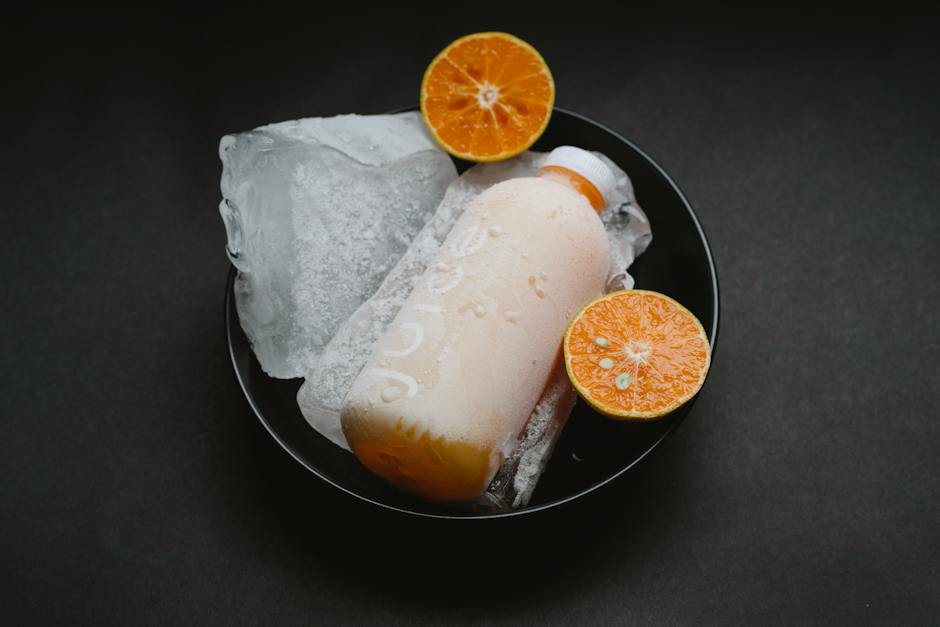
Challenges faced by frozen food manufacturers
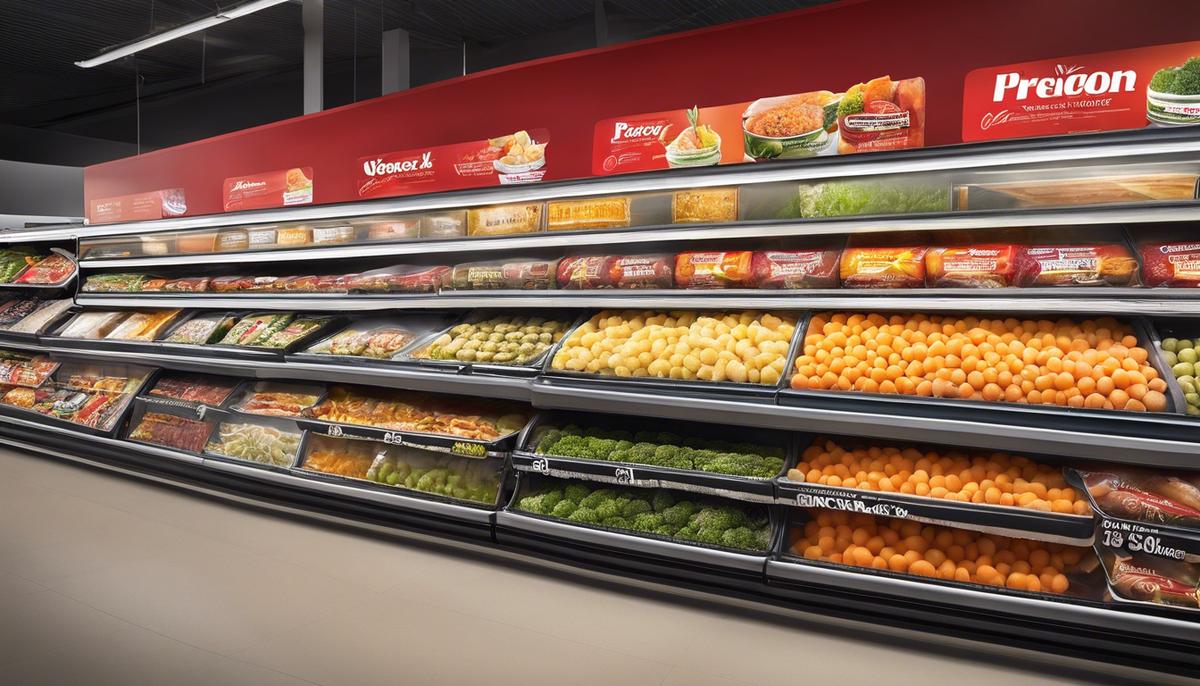
Innovation in frozen food production

Consumer behaviors and frozen foods

The future of frozen food industry
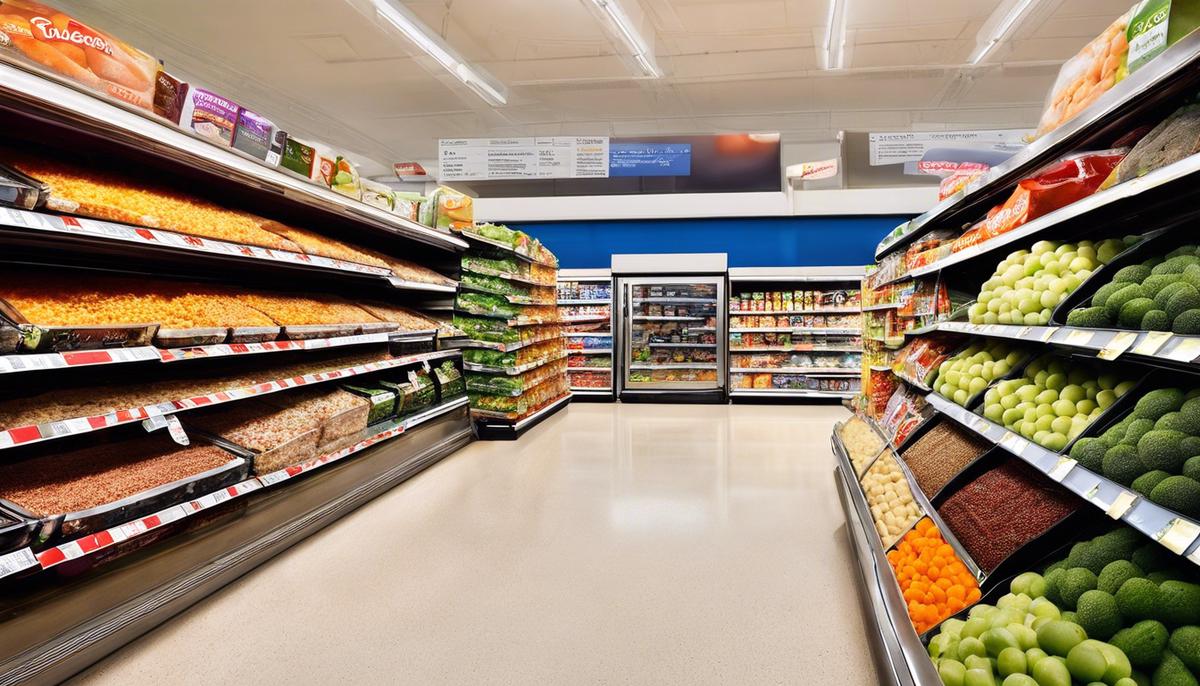
Frozen food manufacturing business plan & How to start a frozen food business?
Market Analysis and Trends | frozen food manufacturing
Thawing the Potential: The Future of Frozen Food Innovation

Business Plan Essentials | frozen food manufacturing
Sharpen Your Strategies: Crafting the Ultimate Frozen Food Business Plan
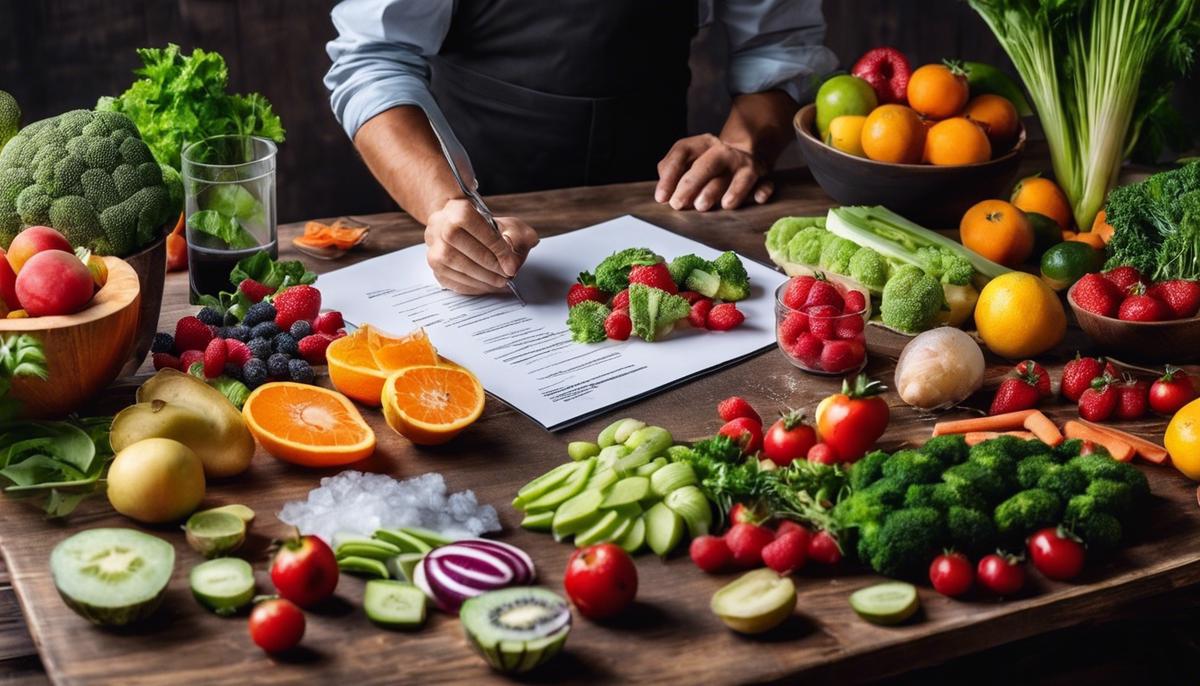
Regulations and Compliance | frozen food manufacturing
Mastering Regulations: Your Guide to Thriving in the Frozen Food Business
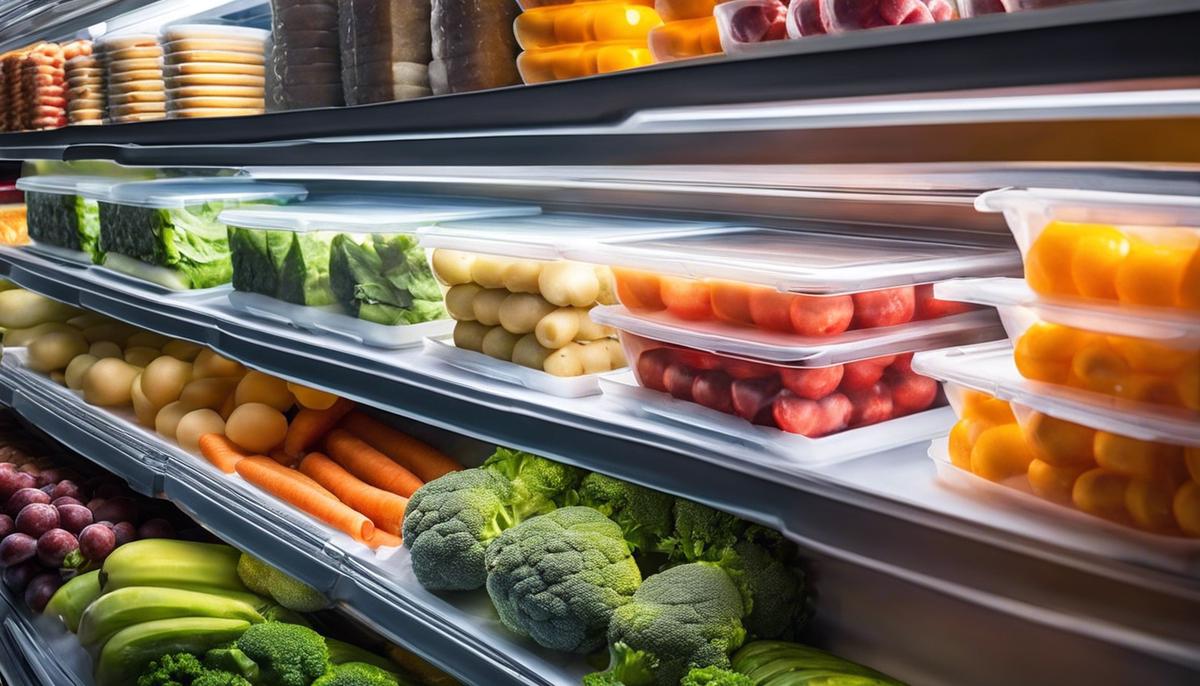
Supply Chain and Logistics | frozen food manufacturing
Optimizing Inventory Through Data Analytics in the Frozen Food Sector
Cultivate Last-Mile Efficiency for Direct-to-Consumer Success
Adopt a 'Just in Time' Mindset
Build Resilience Against Supply Chain Disruptions
Embrace Sustainable Practices That Echo Consumer Values
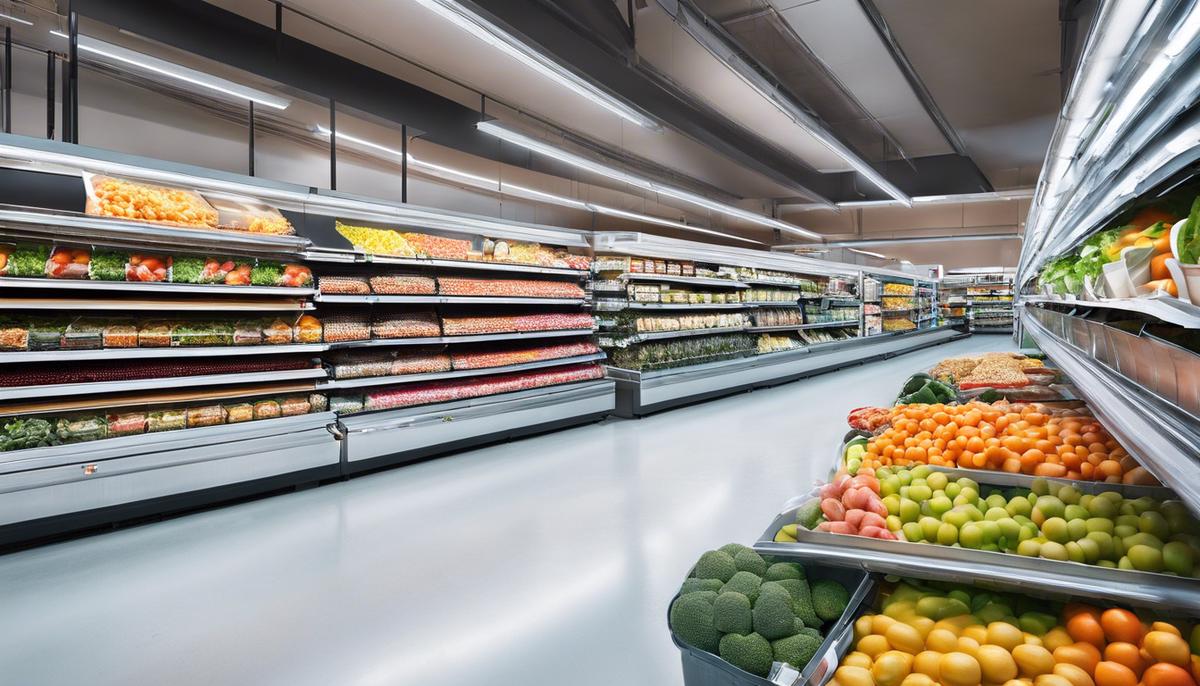
Marketing and Sales Strategy | frozen food manufacturing
Boosting Your Bottom Line: Clever Moves to Skyrocket Your Frozen Food Sales
Engage with Stunning Packaging Design
Incorporate Cross-Promotions and Bundling
Offer Samplings and In-Store Demonstrations
Capitalize on Seasonal Demands
Invest in Strategic Partnerships
Create a Loyalty Program
Embrace Educational Marketing
Deploy Smart Vending Solutions
